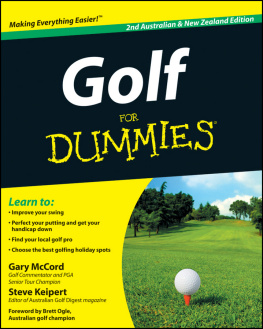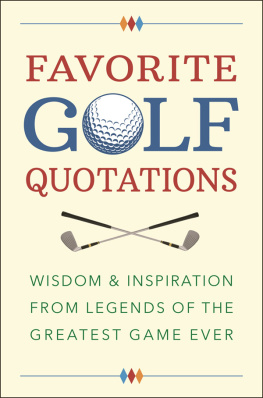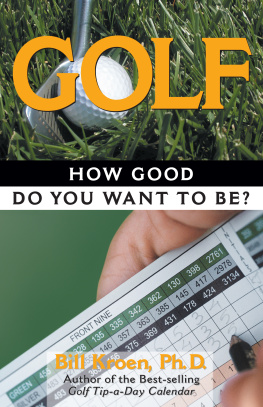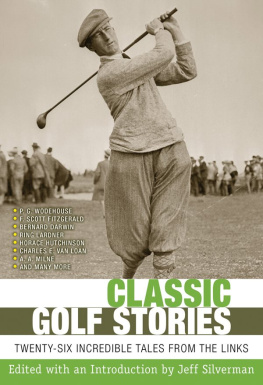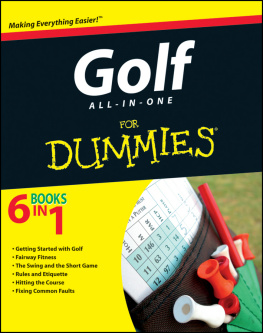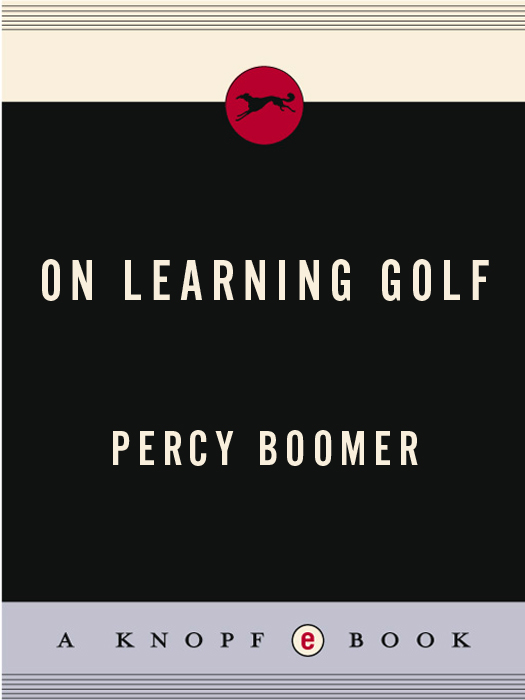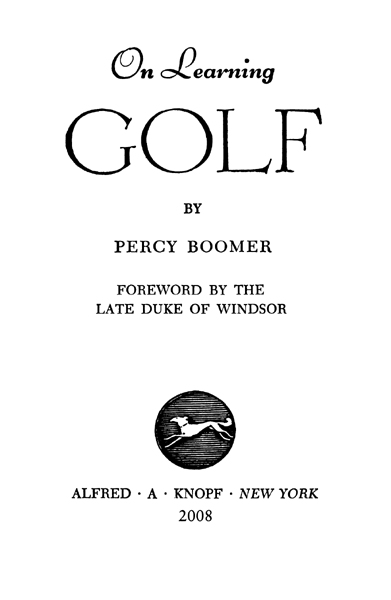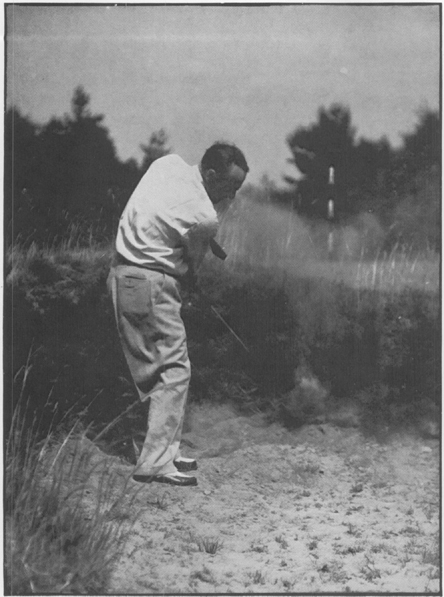
A GOOD OUT
PERCY
THIS IS A BORZOI BOOK
PUBLISHED BY ALFRED A. KNOPF, INC .
Copyright 1946 by Percy Boomer. All rights reserved under International and Pan-American Copyright Conventions. Published in the United States by Alfred A. Knopf, Inc., New York.
PUBLISHED JULY 11, 1946
REPRINTED THIRTY TWO TIMES
THIRTY-FOURTH PRINTING, APRIL 2008
eISBN: 978-0-307-80637-6
v3.1
FOREWORD
By The Late Duke of Windsor

IN the years before the war when there was more leisure to play and study golf, I tried to help Percy Boomer evolve some of the ideas which he presents in his book. This may be the reason why he has asked me from among all his more proficient pupils to write a foreword, and because he used to find me the most persistent in the search for the secret of the correct swing.
Golf has been the subject of so much writing that Percy Boomer is to be congratulated on developing some original thoughts on the popular pastime. Although no game has produced more theories or evoked a greater divergence of opinion as to the methods of its teaching, I believe even the authors sternest critics will admit that he has achieved a pleasing combination of humour with plenty of good golf sense.
It is in no way Percy Boomers fault that I have not yet discovered the elusive secret, and it has to be as a disciple of the game and not as a low-handicap player that I recommend On Learning Golf, in the hope that it will help to reduce its readers scores and discourage their opponents.
CONTENTS
ILLUSTRATIONS

A Good Out
Nearing the Top of the Swing
The Address
The Grip
Correct Feel of the Swing
Nearing the Finish
The Golf Swing in Embryo
Reversed or Putting Grip
The Swing
PLAN OF THE COURSE

THIS is not a book on the science of golf, but about learning it. Everything on the science of the game has been written, little on how to learn it. So I outline a method of learning and stress certain points about the golf swing. And please remember that long experience has told me what to emphasize when teaching. Some of the points which you will find me making a fuss about are considered minor details in the science of the game, but they are important to me because they relate to feel rather than to mechanicsand it is through feel that I play and teach.
I believe that the mechanical details, like the ball, should become incidental. They are of course of extraordinary interest and if this book arouses interest in the fundamental sensations of the golf swing I shall be tempted to write another (and much more extensive one) on its detail. But that is another matter.
In brief, the plan of this book is that in the six chapters of Part One I outline my theory of golf, and explain how I came by it and why I hold it; while Part Two consists of chapters which elaborate the various technical points, interspersed with Interludes for Instruction and Reminiscence which enable certain very essential points to be emphasized as well as providing a little light relief from the more solid matter.
Finally, this book could not possibly be complete without the magnificent photographs which my friends Val Doone have been at such generous pains to make for me. In the course of my golfing life (a grand one!) I have seen thousands of golfing photographs, and they were mostly all just the usual and rather useless pictures; they did not, as do these, reproduce most faithfully those subtleties of grip and stance, of the play of essential muscles, and of the poise of limb and club in motionwhich are, in the end, the grail we seek.
PERCY BOOMER
ON LEARNING GOLF
Part One
THE GENESIS OF THIS BOOK

GOLF is in the Boomer blood. My father was a village schoolmaster in Jersey. As an educationist he was generations ahead of his time. He saw no use in forcing a boy to try to learn subjects which he was obviously incapable of absorbingand of which he could make no use anyway, but he did help his pupils to develop such talents and natural aptitudes as they possessed.
In consequence, though so far as I know his school never produced a Senior Wrangler and maybe did not show up too well when the Inspector came round, it did have the very remarkable record of producing five golfers of international rank in one generation.
I imagine that it is a worlds record for a village school and one never likely to be beaten and if any memorial were needed to my fathers devotion to the game the records of the great Channel Island golfers who were his pupilsincomparable Harry Vardon and his brothers Tom and Alfred, the three Gaudins, Renouf, and Ted Raywould provide it.
Harry Vardon wrote as follows in the story of his golfing life:
In due course we all went to the village school but I fear, from all that I can remember, and from what I have been told that knowledge had little attraction for me in those days, and I know I often played truant sometimes three weeks at a stretch. Consequently my old schoolmaster Mr. Boomer had no particular reason to be proud of me at that time, as he seems to have become since.
He never enjoys a holiday so much in these days as when he comes over from Jersey to see me play for the Open Championship, as he does whenever the meeting is held at Sandwich. But when I did win the championship on that course he was so nervous and excited about my prospects that he felt himself unequal to watching me and during most of the time I was doing my four rounds he was sitting in a fretful state on the seashore.
Incidentally when my father retired from school-teaching at the age of sixty, he joined me at St. Cloud and became a professional golfer. My brother Aubrey became a Pro at seventeen, and now my son Georgehaving had his schooling cut short by the European upheavalshas started his chosen career at sixteen.
About myself. It was intended that I should follow my father as a schoolmaster, but as it fell out I preceded him as a golf Pro! After very few years of school-teaching I decided that any talents I had lay elsewhere and being by then a pretty good amateur golfer I obtained the job of 8th Assistant at Queens Park, Bournemouth. I was then twenty-two. After a short period at Bournemouth I moved to Barton-on-Sea, and from Barton to St. Cloud in 1913. My long period at St. Cloud was interrupted by the first Great War (when I served in the Royal Naval Air Service) and at least broken again by the second. It was at St. Cloud that I developed my ideas about the game and built up my experience as a teacher of it.
Though I have never had the physique required for the hard mill of championship golf I have won three International Open Championships, the Belgian in 1923, the Swiss in 1924, and the Dutch in 1927.


